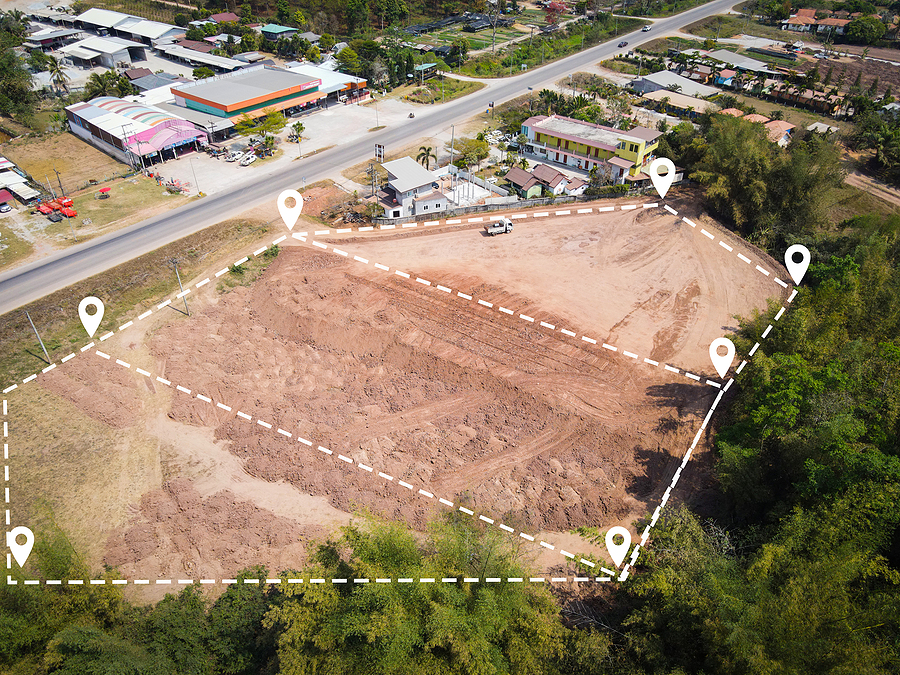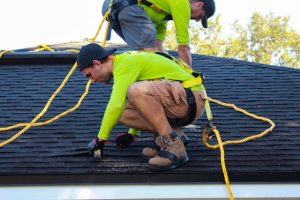When building or subdividing in Brisbane, there are a number of necessary steps to take along the way. One that’s often misunderstood, yet can save you a lot of hassle, time and money in the future is a boundary survey. As one of the final steps to completing your building project, it is easy to forget about, or leave until last. However, without the reassurance of a recent survey of your property boundaries, you may find yourself with costly and stressful disputes with your neighbours.
Boundary surveys (also known as topographical surveys) are exactly what they sound like – a drawing of the visible lines that define where a property starts and ends. These lines are known as boundaries, and are registered on title for each property. A licensed surveyor is trained to use a combination of historical title information and on-site measurements in order to establish the legal boundaries of a property. Their findings are marked on the land and presented in a survey plan, also known as a plan of subdivision or plan of house and land.
Boundary plans can be lodged with councils, used in legal matters, or just filed away for yourself and your neighbour as an agreed reference for the future.
Boundary surveys can also be used to re-establish old boundaries that may have become unrecognised over time. This is another common reason to engage a surveyor, and usually comes up when planning to install new fencing, build an extension, or simply when both neighbours agree it would be useful to have updated boundaries.
Why does it matter?
One of the first questions we ask when meeting with a new customer is if they know where their boundaries are. Our advice is that you should always know! As a property owner, it’s your responsibility to know where the boundaries of your land are. In the State of Queensland, Australia, if you choose to build on someone else’s land and over the boundary, there is a legal principle that says it is your responsibility to be aware. If you haven’t got a recent boundary survey, then you haven’t got any defence if the neighbouring owner decides to take issue with your construction.
Boundary issues are very common in the closely packed, and often slightly older, suburbs of Brisbane. Houses often touch fence lines, with minimum setbacks to backyards. In older suburbs, this means that if an earlier owner decided to build their fence, house or other structure away from the real boundary, this is still how it sits today. Sometimes, both owners are happy with this arrangement, and for generations, both parties might have mistakenly assumed it was correct.
However, one of the biggest causes of a boundary dispute is when a new owner moves in and questions the existing boundary. If no-one has been keeping track, you’ll often see fences that no longer match with title, with some part of it over one person’s property or the other. This can cause conflict, particularly if one of the owners isn’t willing to compromise on what they consider their side of the property.
Boundary disputes can easily turn from a friendly conversation between neighbours into an expensive and long mediation or court process. It may start out over something simple like a fence line, garden bed, clothesline or carparking, but have consequences way beyond what either party ever imagined.
Whereas boundary disputes can cause headaches for established properties, subdivision and development in new estates can have the same result. While building companies are often good at making sure their work is accurate, sometimes small errors creep in. A difference of even a few centimetres can be the difference between a retaining wall or shed overhanging a neighbouring block, or being on your property. If your neighbour doesn’t like this arrangement, you may be left with having to take it down, or reach an expensive settlement to leave it in place.
The council’s role
One thing councils cannot do is physically tell you where your boundary is. All they can provide is information you can already find on title, or the historical information associated with your land. They can also tell you the standards they expect you to meet when building a fence, but not whether you need to meet them.
As a builder and developer, we always recommend a current survey for this reason. Councils are also responsible for approving any new fencing that is over a certain height or type of fence. They often require a copy of a survey plan as part of any permit application.
Boundary surveys and subdivisions
Boundary surveys are required as part of any subdivision or development application to a council. If you’re planning to subdivide a lot, it is likely you will need to employ a surveyor anyway, so make sure they’re aware of what information you’ll need in the future.
As well as knowing where your boundaries are for the house and land you want to build, a survey will also show you if there are any easements or other encumbrances on title. Easements may provide other people with rights over your land, which can also complicate construction.
Boundary surveys can also be a great tool in helping you work better with your neighbours. The most simple benefit of a survey is if you ever have any uncertainty or disagreement in the future, it is much easier to solve a problem with the facts in front of you.
Boundary surveys are an investment
The value of having a current boundary survey prepared by a professional cannot be understated. The services provided by Surveyors Brisbane mean you can engage them for all stages, from boundary identification and advice, to the survey itself, and even to re-mark old boundaries on the land itself. As a builder, we also make sure our surveyors know all the local council requirements to help you meet the building codes, as well as understand the unique challenges presented by each site in Brisbane.
When to get a boundary survey done
The most common times for a property owner to get a boundary survey completed is in the lead up to or during a sale, a boundary dispute, or for new development or subdivision. However, we recommend getting one completed before any of these so you have it to hand as a reference if or when any of these things arise.
If you are building a house or doing any work on your land, it is also useful to have this information at hand when liaising with building inspectors or council officers. Most will require a survey for higher fences, and you may want to show one for other issues.
If you’re not sure whether you need a boundary survey or when to get one, don’t hesitate to ask! One of the best ways to prevent a dispute is to arm yourself with the correct information before it’s too late.






